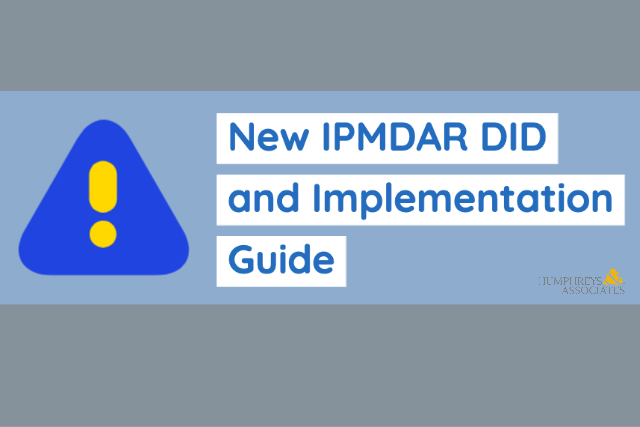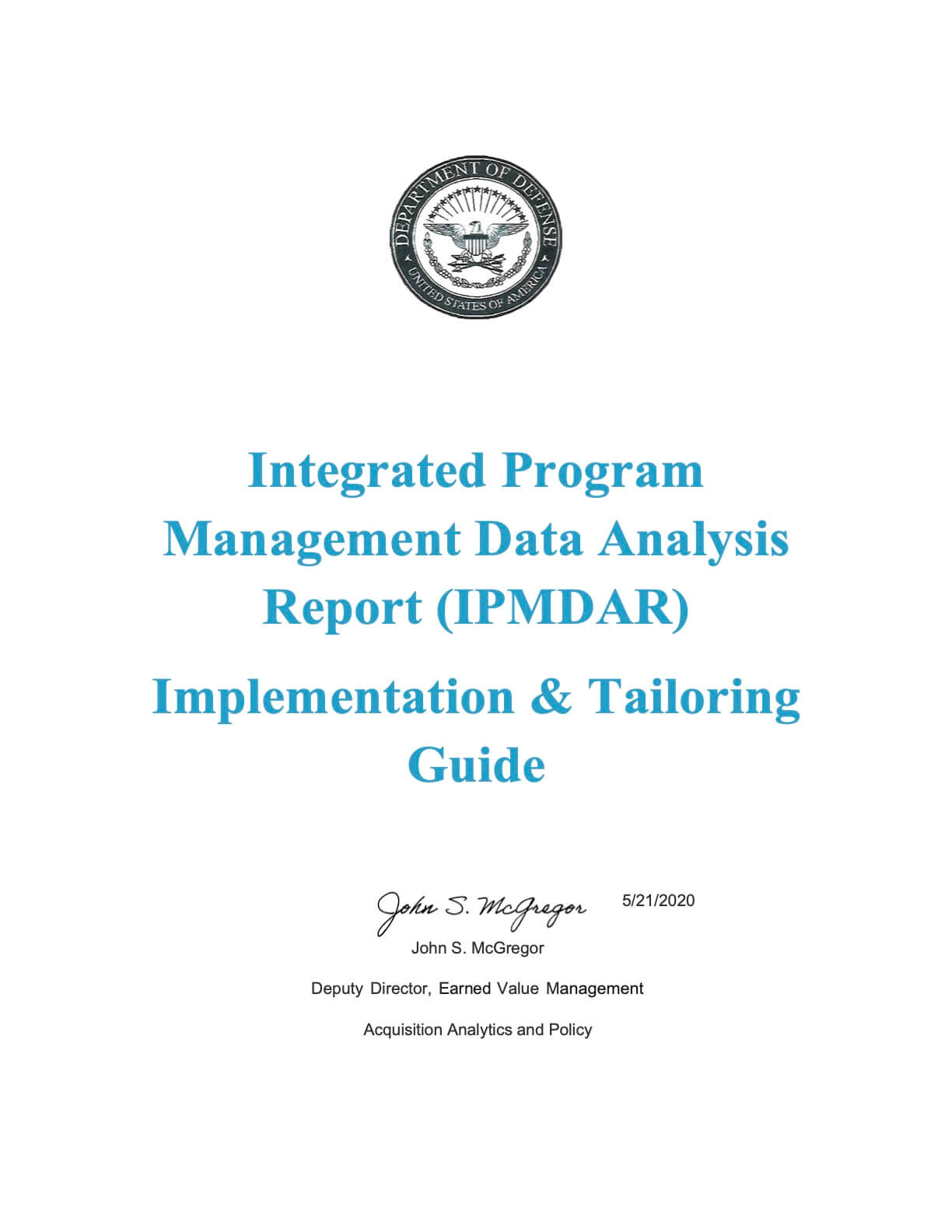New IPMDAR DID and Implementation Guide
by Humphreys & Associates | June 3, 2020 5:00 am

The New Integrated Program Management Data and Analysis Report (IPMDAR) Data Item Description (DID) and Implementation Guide
On March 12, 2020, the Defense Department (OUSD/AAP) instituted the new Integrated Program Management Data and Analysis Report (IPMDAR), issuing the Data Item Description (DID) Number: DI-MGMT-81861B. The IPMDAR is to be used for solicitations and RFPs for contracts with an EV reporting Requirement starting from March 12, 2020 forward. The IPMDAR can also be applied to modified contracts or to existing contracts (under the old IPMR or CPR requirements), but this has to be through a bi-lateral agreement (Government Program Office and Contractor).Significant Change
This IPMDAR is a significant change from the previous iterations, the Integrated Program Management Report (IPMR) and the old Contract Performance Report (CPR). The IPMDAR has dispensed with the delivery of physical reports (Formats 1 – 7 of the old IPMR/ CPR), instead now requiring contractors to provide three (3) specific electronic data sets:- The Contract Performance Dataset (CPD)
- The Schedule, comprised of
- The Native Schedule File and
- The Schedule Performance Dataset (SPD)
- The Performance Narrative Report, comprised of
- The Executive Summary and
- The Detailed Analysis Report
Implementation & Tailoring Guide
To help expedite the adoption of the New IPMDAR, on May 21, 2020, the AAP office also issued the 87-page Integrated Program Management Data Analysis Report (IPMDAR) Implementation & Tailoring Guide:
“This guide covers the application of the DID, how to tailor the DID in the Contract Data Requirements List (CDRL), and clarification on the intent of the DID.”
Interesting Features
The IPMDAR has introduced some interesting features that are clarified in the Guide:
- The default reporting is at the Control Account, but there is the option to have Work Package Level reporting (negotiated item)
- Reporting is by Hours and Elements of Cost (EOCs) (for either the CA or WP level)
- Time-phased Future Baseline (BCWS) and ETC Forecast (for either CA or WP level)
- Best Case/Worst Case/Most Likely EACs reported by hours and dollars
- The Native Schedule is a direct export from the contractor’s scheduling tool
- The SPD must match the CA or WP level negotiated
- The Government may have any subcontractors provide the IPMDAR directly to the Government
- Even if this is required, the subcontractors must still provide the IPMDAR data to their prime contractor
- The IPMDAR reporting components must be delivered to EVM-CR not later than 16 business days after a contractor’s accounting period
- Incremental deliveries may be authorized, but all the items must be in NLT the 16th business day and the incremental deliveries are negotiated. A potential example is IMS by third working day after close-of-month, the raw data by fifth working day, and format 5 narrative by the sixteenth working day.
- Historical Contract Performance Data – The Government may request this “time-phased historical data from contract award” in place of the normally provided CPD (typically no more than annually).
Applicability
IPMDAR Applicability:
- IPMDAR is intended to be applied completely (i.e., not tailored) for cost or incentive contracts ≥ $20M – unless tailoring is specified within the DID and coordinated with the Service/ Agency EVM Focal Point.
- If EVM reporting is required on contracts less than $20M, tailoring is more flexible, BUT the Native Schedule and Performance Narrative Report are recommended.
- IPMDAR typically not required on FFP.
Humphreys & Associates, Inc. can help you properly implement the new IPMDAR requirements, please contact us at (714) 685-1730
Source URL: https://blog.humphreys-assoc.com/new-ipmdar-did-and-implementation-guide/
